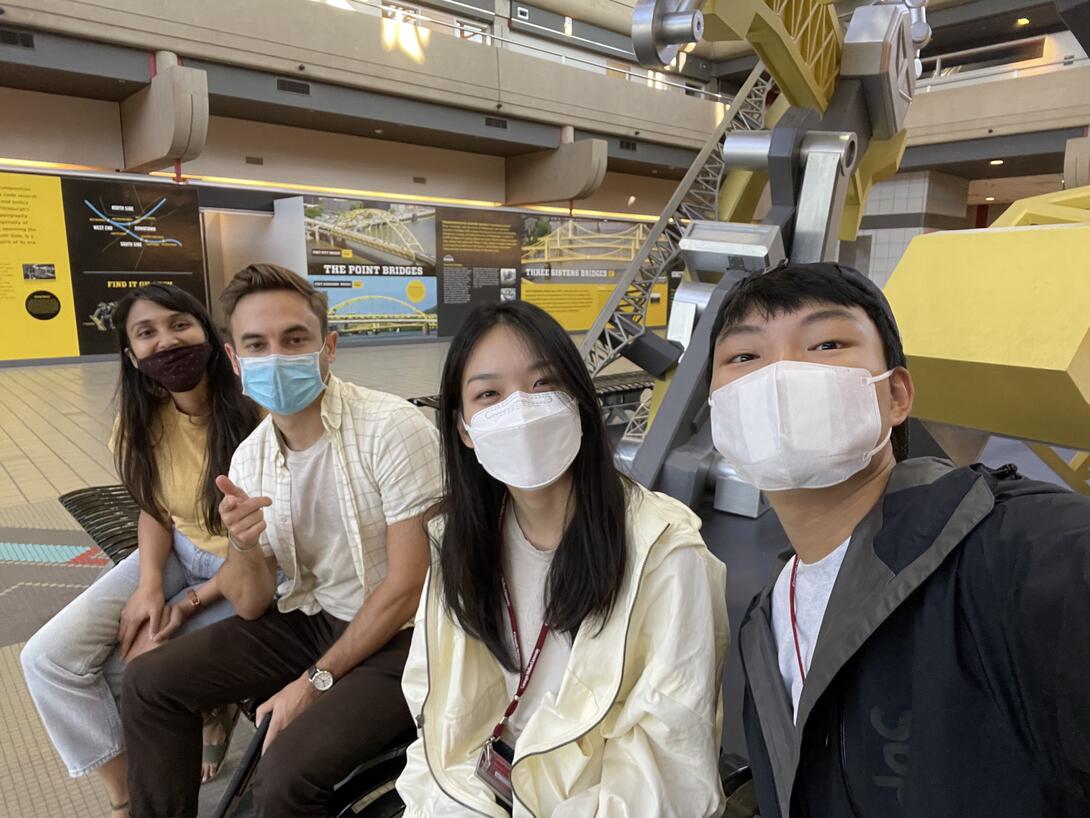Master's Students Win Multiple Awards with PIA
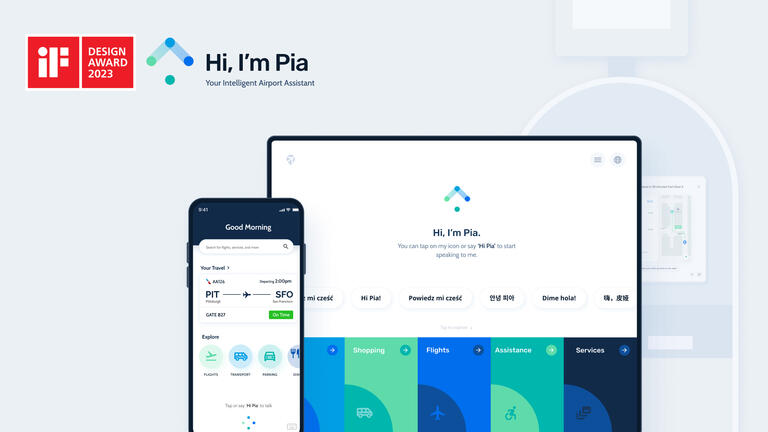
Master’s Students from Carnegie Mellon University’s School of Design, Weijie Wang (MDes ‘23), Devika Pillai (MPS ‘22), Matt Muenzer (MPS ‘22), and Youngryun Cho (MDes ‘23), won the Gold Award at the HCII 2022 Conference for their team project, PIA. Only one project from the conference receives a Gold Award. Days after this announcement, their work also received the Notable Interaction Award from Core 77.
Their project, “PIA - Intelligent Voice Assistant for Pittsburgh Airport,” proposes an AI-driven digital assistant to ease the airport experience. “We all know that flying commercially can end up being a total mess, and have all been in a position where we felt helpless,” explains Weijie Wang, a member of the design team and Master’s student at Carnegie Mellon’s School of Design. “From late or canceled flights, missed connections, long lines, crowded terminals, and unappealing food, the current traveler experience can be complicated and disconnected.”
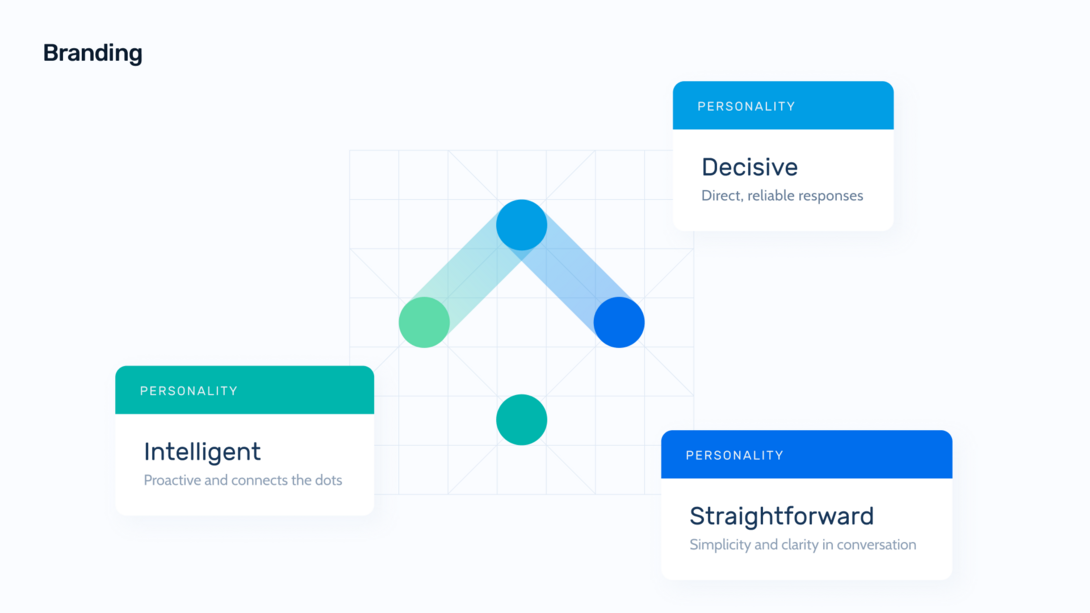
The team didn’t want their design to be confined to the airport itself. The design covers the holistic commercial flying experience, including travel timing to and from the airport, multilingual assistance, intelligent flight updates, and more. The team drew from research at the Pittsburgh International Airport, as well as familiar experiences dealing with travel logistics. “We visited the Pittsburgh Airport during our initial research phase, but also could draw upon a rich stock of pain points and insights that people had all throughout the journey – before the airport, at the airport, and after leaving the airport. We saw a massive opportunity for design intervention in the space and were eager to dig into it,” said Devika Pillai.
PIA helps to solve the disjoint between airports and individual airlines. “Airlines cover booking, check-in, boarding, and (importantly) the flight, but airports are the go-to party (or should be) for securing parking during your trip, finding dining and shopping before your flight, finding a way into town after landing in a new city, and so much more. While airports often struggle to deliver on these services with rushed travelers, Pia’s connected assistance can fill in those gaps and elevate previously underwhelming or invisible services, all helping travelers hit the marks in their itinerary,” said Matt Muenzer.
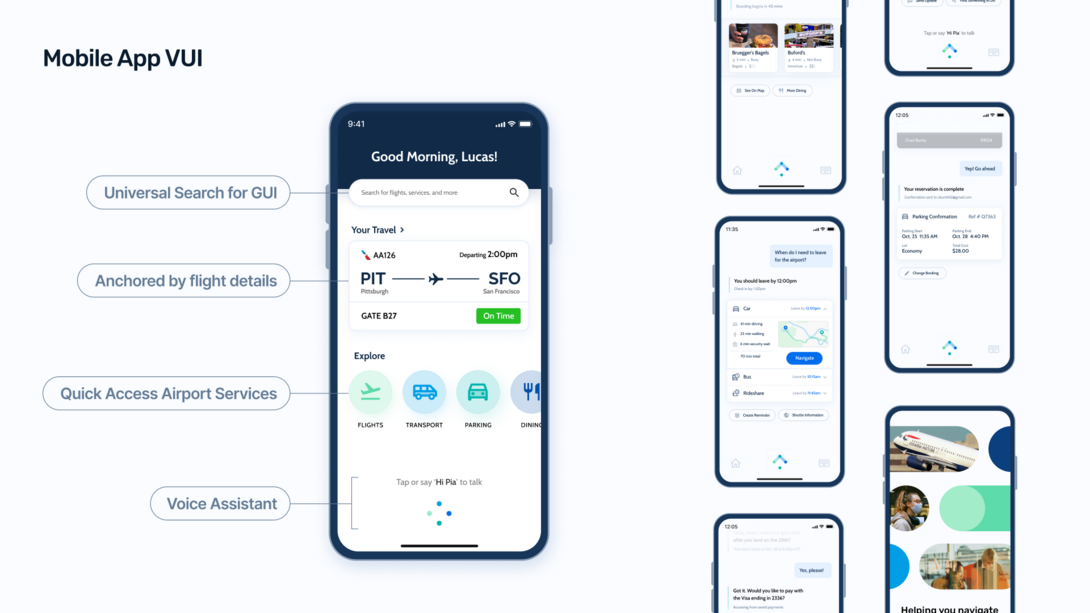
To account for the rushed nature of travel, PIA utilizes AI-driven voice assistance as a key aspect of its design. “We found that voice integration was an excellent fit for this opportunity. Air travelers often feel stressed, rushed, and uncomfortable. Voice interfaces can collapse complex requests and return reliable results, backed up by on-screen information, from a depth of airport and airline data.”
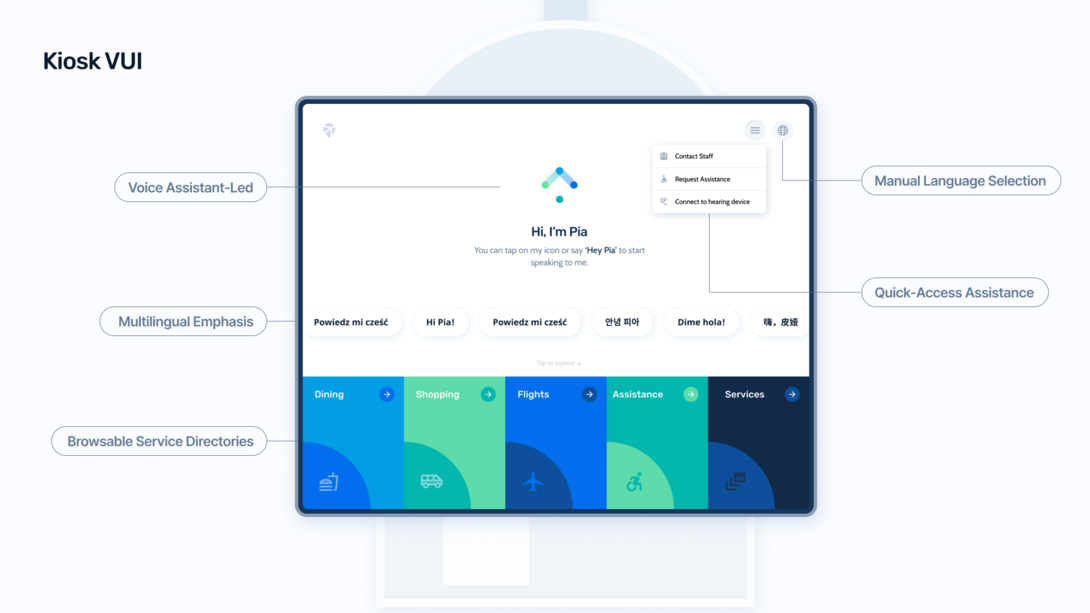
The team recognized that PIA could be incorporated into existing airport features, such as assistive kiosks. “Pia’s mobile app provides both touch and voice-led interfaces for travelers on the move, but (excitingly to us) this system also activates underused check-in kiosks, such as those we found distributed throughout the Pittsburgh airport.”
On the importance of design thinking for an issue such as travel, Youngryun Cho explains, “There are so many stakeholders involved in what you experience when you go to the airport for a trip. With how many logistical and economic factors are at play in air travel, it’s not surprising that a huge disconnect emerges between service providers and customers. The design tools and skills we had the chance to use on this project helped us step into a perspective from which we could start to see novel and mutually beneficial solutions in the space, even though we started as total outsiders."
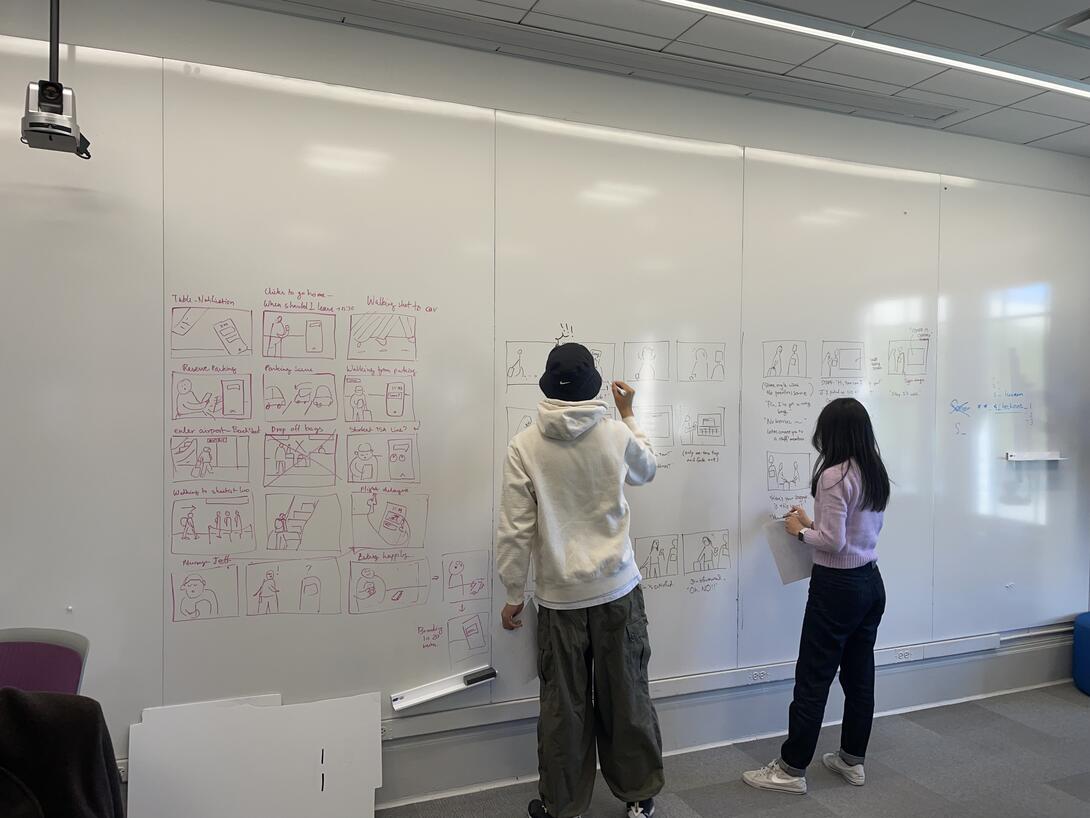
The team said that the awards serve as an inspiration to forge ahead. “We worked really hard on this project and it can get difficult to get a perspective on the work while you’re doing it,” said Wang. “Once it was done, we were super happy with the concept, as well as all of the detail we put in.”
While there’s no current plan for the future of PIA, the group is hopeful that it will have an impact on travel systems and how we consider the whole airport experience. “Something very exciting for us during our work was that, while much of our original research was rooted in experiences at Pittsburgh International Airport, we found that many of our design solutions had real potential across any number of airports,” said the team. “As airports strive to grow, get smarter, and work more sustainably, Pia could really bolster the usability and efficacy of services within airports, as well as those to which they are connected.”
